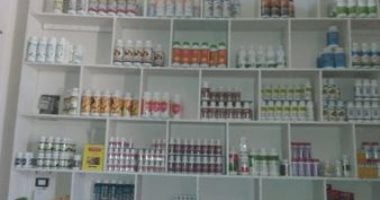Protocol between the Central Pesticides and Food Safety for the analysis of agricultural exports

Dr. Ashraf Al-Marsafi, Director of the Central Laboratory of Pesticide Residues of the Agricultural Research Center, said that the capacity of the plant to analyze samples of agricultural export products from 800 samples per day to 1000 samples per day is being increased by 2019 in one of the approved activities to increase agricultural exports abroad. The growing demand for analysis in the internationally accredited laboratory.
Al-Marsafi added that the lab will purchase heavy metal analytical devices with modern technology for the estimation process to absorb a large number of samples and reduce the time of analysis from the plant's own resources, thus gradually covering all the needs of importing countries for the analysis of pesticide residues and heavy metals.
Al-Marsafi revealed the existence of a plan that includes a number of measures to be implemented between the laboratory and the Food Safety Authority. The agreement was signed by the Food Safety Authority and some of the staff of the lab through the mandate.
He pointed out that the Commission has sent 87 samples to estimate the residues of pesticides, microbes and heavy metals since October 2018 until March 2019. The laboratory carried out the required tests and issued internationally approved certificates of approval and decided to accept them or not and deliver them to the National Authority for Food Safety.
He added that the protocol aims to benefit from the laboratory's technical capabilities to regulate the method of work and analytical services provided by the laboratory with internationally certified certificates in the fields of pesticide residues, veterinary drugs, heavy metals, fungal toxins, food additives, microbiology, dioxins and persistent organic pollutants.
Al-Mursafi said that the Food Safety Authority requested the Minister of Agriculture to register the central laboratories of the Ministry of Agriculture to register their data and fill out the questionnaire on the laboratories for examining the Egyptian food through the website of the National Authority for Food Safety in preparation for contracting these laboratories capable of performing the necessary tests efficiently And effectiveness.
He added that in the absence of approved government laboratories, the Commission may contract with other accredited private laboratories "through the official methods from the Ministry of Agriculture and Land Reclamation and the Center for Agricultural Research Central Laboratory for the analysis of pesticide residues and heavy metals in food and institutional.
He pointed out that the technical documents of the pesticide residues, heavy metals, veterinary drugs, dioxins and microbiology have been reviewed and the approved laboratory analysis and ISO 17025 certified by the Finnish Accreditation Authority,FINAS"The national accreditation certificate obtained by the laboratory from the National Council for Accreditation"EGACAnd laboratory tests of laboratory efficiency and international tests carried out by the laboratory and passed through all laboratory analysis activities. The laboratory's potential and its role in the field of food safety, analytical devices and cadres owned by the laboratory. These were sent through the website of the National Authority for Food Safety in accordance with the request of the Authority Articles of the law establishing the National Authority for Food Safety.
The Central Laboratory for Residue Analysis of Pesticides and Heavy Metals in Food offers a number of proposals to be adopted for pesticide residues analysis. The vegetable and fruit crops analyzed in the plant are classified on the basis of the risk of exposure and through the data available in the laboratory.
For example, grapes, strawberries, guava and pepper can be classified as high-risk crops compared to carrot, pea and taro crops with low-risk crops, noting that the priority of the sampling of vegetable and fruit crops is taken to estimate pesticide residues on this basis. And fruit.
For the analysis of heavy elements, the most concentrated plants, such as dill, parsley, coriander, dry medicinal and aromatic plants, which extract oils and children's food, are chosen because of the concentration of heavy elements. To estimate the heavy elements based on the risk studies of the crops produced by the plant and according to the seasons of the crops.
The director of the pesticide residues plant stressed that for the treatment of aflatoxins, the General Authority for Standardization and Quality has approved the maximum limits allowed by European legislation for peanuts and the like. He pointed out that the customers of the Central Laboratory for Residues of Pesticides were informed about the sources of agricultural crops. Animals. Any shipment of these products is required to estimate the following compounds (PCDD and PCDF). The laboratory evaluates these compounds according to European legislation.
He added, "Al-Marsafi", that there is no type of excesses now for the samples analyzed by the laboratory received from the General Authority for Veterinary Services in relation to the analysis of products of animal origin, noting that if any source exceeds any of the conditions of export is notified The technical point of this excess to inform the Exporters Affairs Committee to investigate him and to impose the moratorium on export for a period of one to three years.
(tagsToTranslate) pesticide residues (t) agricultural exports (t) agricultural products (t) analysis of samples (t) vegetables and fruit
Post a Comment